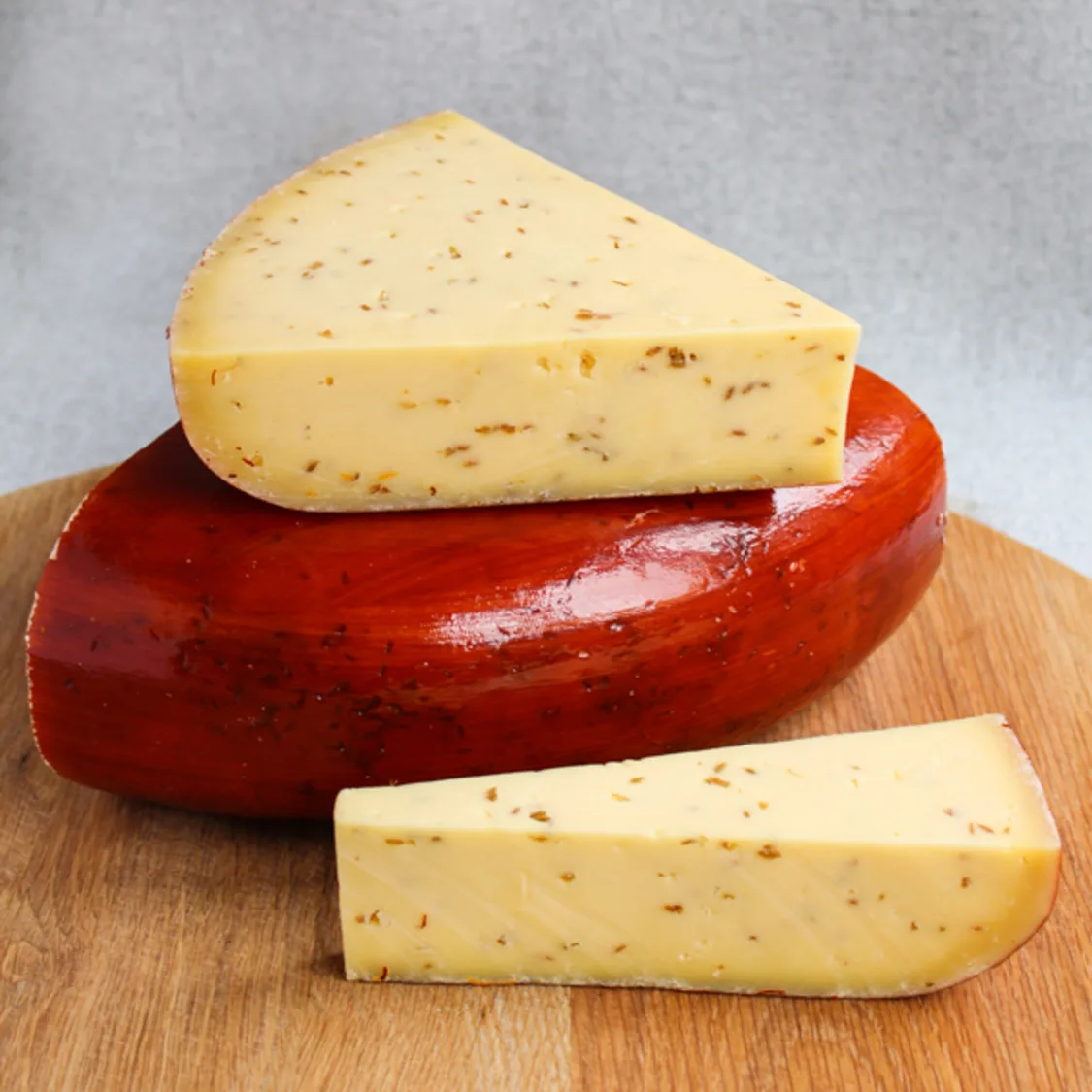
Gouda Cheese
Famous Dutch cheese known for its rich, buttery flavor and smooth texture.
Ingredients
- •Cow milk
- •Rennet
- •Salt
- •Cheese cultures
- •Wax coating
Instructions
Curdle
Add rennet to warm milk to form curds
Press
Drain whey and press curds into molds
Age
Age cheese for several months to develop flavor
Gouda cheese, pronounced 'How-da' in Dutch, is perhaps the Netherlands' most famous cheese export and a true icon of Dutch cheese-making tradition. This semi-hard cheese is known for its rich, buttery flavor and smooth, creamy texture that becomes increasingly complex with age. Young Gouda is mild and creamy, while aged varieties develop a deeper, more caramel-like flavor with delightful protein crystals that add a pleasant crunch.
The history of Gouda cheese dates back to the 12th century, making it one of the oldest recorded cheeses still made today. It gets its name from the city of Gouda in South Holland, which historically held the exclusive rights to trade this cheese. During medieval times, Gouda was the only place where farmers could sell their cheeses, making it the center of Dutch cheese trade.
The traditional cheese-making process begins with fresh cow's milk, which is heated and combined with starter cultures and rennet to form curds. These curds are then cut, stirred, and pressed into round molds that give Gouda its characteristic wheel shape. After brining, the cheese wheels are coated in wax or plastic rind and aged anywhere from a few weeks to over a year. The aging process, known as ripening, is crucial in developing the cheese's flavor and texture.
Modern Gouda comes in various styles and ages. Young Gouda (Jong) is aged 4-6 weeks and has a mild, almost sweet taste. Medium-aged (Belegen) is aged 2-6 months and has a fuller flavor. Old Gouda (Oud) is aged over a year and develops a strong, sharp taste with crystallized proteins. Specialty versions might include herbs, spices, or smoke flavoring. Some artisanal producers still make raw milk Gouda using traditional methods.
In the Netherlands, Gouda is enjoyed in countless ways. It's a staple on Dutch breakfast and lunch tables, often served on bread or crackers. It's also popular in sandwiches, grated over dishes, or enjoyed as part of a cheese board with mustard, fruits, and wine. During cheese markets, particularly in Gouda and Alkmaar, tourists can witness traditional cheese trading demonstrations where wheels are carried on wooden stretchers by cheese porters in traditional costume.
From a nutritional perspective, Gouda is an excellent source of protein and calcium, with aged varieties containing higher concentrations of these nutrients. A 100-gram serving typically contains about 350 calories, making it quite calorie-dense. It's naturally gluten-free but high in saturated fat and sodium, so moderation is key. Those with lactose intolerance might be interested to know that aged Gouda contains very little lactose, as most of it is broken down during the aging process. However, individuals with milk allergies should avoid it entirely.
